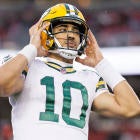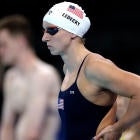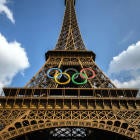 |
| Larry Scott didn't know he would be launching seven networks until little over a year ago. (U.S. Presswire) |
In throughly modern fashion on August 15th, 2012,
This is an oral history of how the revolutionary – and hectic – undertaking was accomplished as discussed in hours of interviews with CBSSports.com before the launch of the networks.
Larry Scott, Pac-12 commissioner
"When I came in, I didn't know we'd do a TV network. That is an idea that emerged after I did my first 100 day tour of all the universities. I visited the campuses and found they wanted to be aggressive and wanted to be very progressive in terms of our thinking. As I looked at the landscape, I looked at what the Big Ten was doing, what others were doing, I talked with TV executives and said, 'You know, this would be great for us.' There was so much pride at the campuses in the Olympic sports that we didn't want to be known just as a football conference or just as a football and basketball conference. We see ourselves as unique and want to be differentiated. I thought, being an East Coaster myself, there was very little awareness and appreciation outside the West Coast about what the Conference of Champions really means and the prolific success in terms of NCAA championships and Olympic sports. I said the only way that's really going to get conveyed and the conference is going to be seen nationally as it's seen out here is if we can make these sports available on TV and we can be masters of our own destiny in a sense. The only way to do that is to have our own media platform.
“At the conference level, one of the things I did -- and this is a good example of tapping into the resources we have here on the West Coast -- is I know Phil Knight real well from my tennis days. He's a big tennis fan and Nike's heavily invested. I know their support for our conference, at the time Nike supported nine of our 10 schools and now they're at 10 of 12. So I went up to see Phil. I said, 'Hey, I'm new in the role, can I come see you when I'm up at Oregon?' This was during my first 100 days and I made a detour to Beaverton. He had a sense of what I had done in tennis. I said, 'I'd love to pick your brain about where the conference is at, where you think it could be and how I'm kind of thinking about it.' He brought about a half dozen people together, him and some of his senior people and some of the senior people from Wieden+Kennedy. We spent two hours just talking about the our conference and the broader collegiate landscape, branding, sports brands. My thesis at the time was that there's a lot that's cool about the West Coast; there's a lot of innovation, there's a lot of style, a lot of performance that the West Coast is known for.
"The first time I came to our presidents and chancellors with that idea was in October of 2009 after I started. They were very supportive to advance the idea. For about 12 months after that, from October 2009 to October 2010, we started to really do the due diligence and start analyzing it. We meet three times a year with our board and at our fall board meeting I came to them and said, 'Ok, if we're going to maximize our opportunity in licensing our rights but also do a TV network, there are a few things we need to do. We needed to pull all of our media rights into the center, we can't have local school packages. It needs to include digital because the world of the future is content, it doesn't matter what device. We need to share revenue equally, if this is going to be an enterprise you want to build the conference as a business as well as an association.' That was really a defining moment.
Once Scott got the thumbs up to be aggressive, and before the network idea could take off, he first turned his attention to expanding the then Pac-10. After a bold and aggressive attempt to lure six Big 12 schools west to form a Pac-16 superconference fell through, the league settled on adding Colorado and Utah in the middle of June 2010. With new members secured, the appropriately named Pac-12 set about negotiating and securing their first- and second-tier media rights that had come to the market. In early May 2011, the conference announced a 12 year deal with ESPN and Fox that was worth a reported $3 billion. As part of the agreement, Scott said the league would develop their own network and, unheard of at the time, would hold back certain football and basketball games for themselves.
Chris Bevilacqua, CEO of Bevilacqua Media Company and Pac-12 media advisor
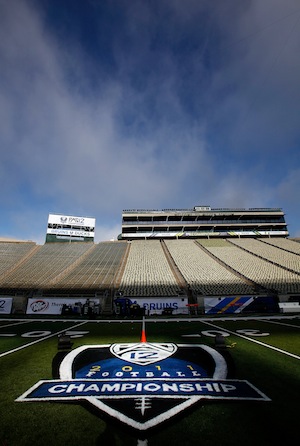 |
| Adding Colorado and Utah also allowed the Pac-12 to sell a conference championship game to ESPN and Fox. (U.S. Presswire) |
"You never know until you get into the market place but we had a very thoughtful and flexible plan. We did the really important thing of consolidating all of the rights to the 2,600 live events.
"There were a couple of different paths we could have done. We could have taken the whole ball of content and gone to an NBC/Comcast to try and do an over-the-air package and a cable package plus use them as partners to start a network. It became clear to us in the early goings that there was a lot of people interested in the content and that we should break apart the two processes. We said let's do our over-the-air and national cable package first and we'll negotiate favorable content rights that we could hold back. Then we could take back everything we didn't license, which ended up being all but about four percent of all their inventory and only 130 or so events total. That was the whole package we sold to Fox and ESPN and we retained everything else. We were able to get favorable selection rights and digital rights also. We knew we had something really special."
Gary Stevenson, CEO Pac-12 Enterprises
"I came after the idea was hatched by Larry. I'd known Larry for a longtime, I had sold my company and, quite frankly, I thought I was going to be playing golf and fishing. I saw him at the NBA All-Star Game in 2011 in February (in Los Angeles). He said to me, 'You know we're thinking about launching our own network, what are you doing?' I said, and what I was actually doing, was looking at real estate up and down the East Coast thinking about which ocean place I was going to move to. One thing led to another and here we are.”
Scott
“We started saying we would do one, national network. The idea (for seven) came up during our negotiations during ESPN and Fox. We were negotiating with different parties on if there could be a partner -- you tend to need partners in a venture like this. Financially, this is very expensive and we don't have any income coming in yet until launch so it's an expensive undertaking. Distribution is hard to come by so you tend to take on a partner to help with leverage in distribution. We were talking with several different parties about a Big Ten-like model and a 49-51 joint venture.
“One of the conversations, and this was always kind of a long shot, was talking to cable companies directly. To Comcast, Time Warner about a similar 50-50 joint venture but, in the process, it was their idea to say, 'Maybe we could talk to you about a few of us that work together and doing this kind of collectively with you. What we really want is a direct relationship with you and not to have to go through middlemen. And, number two, we'll help you with your national network but we really like being hyper-local. We talk to our customers on a very local basis.'
In L.A., the idea of having a network with heavy USC and UCLA influence is very appealing for Time Warner. The same for Comcast, having a network in the Bay Area that's heavy Cal and Stanford, very appealing. The idea really came, it was kind of co-designed, by the cable partners we talked to and our media advisors kind of cooked it up.
“The more I thought about it, the more I thought this is great for us in that we can be the best of both worlds; we can have a national network yet our schools have basically their own network. When you talk to advertisers, that gives us a lot of flexibility in that you can be involved nationally or you can be involved locally."
Bevilacqua
"We had always envisioned that we could create a media company. We didn't know how and who and what but it became pretty clear to us that because of what we retained we had quality enough content that we could go directly to the distributors and have our own negotiations without a middleman.
“They got the best of both worlds, guaranteed economics and broad-based exposure on News Corp. and Disney platforms plus a direct relationship with their cable customers and 100 percent equity."
| More on Pac-12 |
| Columns |
 |
| Related links |
|
In conjunction with four large cable companies (Cox, Comcast, Bright House and Time Warner) that formed the iN DEMAND consortium, the Pac-12 Networks would surprise the college athletics landscape. With a deal completed while the league was on an East Coast swing of their media days in late July of 2011, the Pac-12 was able to secure upfront funding that wouldn't cost member schools a dime as they began their ambitious undertaking.
Scott
“Once we decided last July that we were going to do seven networks and a digital network, we didn't have a specific thought about how we were going to do it. We knew we were going from a standing start. Even before we hired Gary (Stevenson) who started in September, and Lydia (Murphy-Stephans) who started in December, we started working on the brand. I went to Danette Leighton, our CMO, and said, 'This is going to move incredibly quickly, we have a tremendous operational challenge to be able to launch these networks in a year. Having thought about so strategically where we wanted the conference to sit, let's start figuring out who we wanted to work with to think about the brand positioning of this network and how it's going to be different from a regional sports network, how it will be different from ESPN and what we want it to stand for. 'That takes some time because these things need to ferment.
"We actually hired in August (2011), within a month of us deciding we were going to do this, a TV brand graphic design agency in L.A. called Imaginary Forces to help us think about how we were going to be positioned and the look and feel. What you see on the network today is this concept of connections and the light that connects our 12 schools.
"We were in a meeting room in Walnut Creek and they had come up to present a few different ideas. What we had been trying to juxtapose was three things: being modern, progressive and representing the future; at the same time celebrate the heritage of John Wooden, Bill Walsh and all this great stuff like the Rose Bowl; and, because of the research on being on the West Coast, what are the visual cues like the landscape and the mountains. A lot of what we saw was very forced. Then we saw this idea of connections with a flashing light, it had energy, it tied into the geographic location -- we said, 'Aha, that's it!' They found a way to strike this balance between modern and a cool look and feel with who we are graphically and the kind of icons that are part of the conference."
Stevenson
"When I walked in on September the 6th, the first thing I did was walk in and figure out who was going to get me a phone and computer. Erica Sigg was at the front desk as the receptionist and every time I walked in and needed an envelope or something, I was going out to her and saying, 'Erica, can you help me?' She was pleasant and smiled and by about the third day, I went to the Chief Financial Officer and said, 'Hey can I hire Erica?' He asked for what and I said, 'To help!' So Erica was employee number two.
"The first two things we worked on were brand and human resources. If you get those two things right, you have a chance to succeed. If you don't get those two things right, you have no chance to succeed.
“We spent a lot of time talking about brand and what we wanted to see and look like. Then we immediately started hiring senior staff. I can't tell you how many resumes and interviews. You can't compromise when you're hiring people. In this business, people are your factory and you've got to get it right.
"The first guy we hired was Larry LaFave (as Vice President, Remote Operations). Larry was an engineer and, I think, employee number four. Larry came from NEP and has a lot of experience in live event programming. We knew that we were immediately going to have to see what was going on at the venues and also needed an engineer to help us think through the building. We didn't have a building so we had to go look at buildings so Larry was very helpful. Then we hired Brent Willman, who was the Chief Financial Officer at the Oprah Winfrey Network. He had launched the Oprah Winfrey Network, the GameShow Network and his experience was just invaluable."
One of the key hires early on was of Lydia Murphy-Stephans, a former Olympic speed skater and longtime television veteran. After starting out as a production assistant under Roone Arledge at the 1988 Winter Olympics, Murphy-Stephans spent over a decade at ABC Sports and helped televise the Rose Bowl among other events. She also worked at Oxygen Media and was hired from MSG Network.
Lydia Murphy-Stephans, Executive Vice President and General Manager, Pac-12 Network
"I knew that as soon as the Pac-10 hired Larry Scott, that there was change that was about to happen. He's a very thoughtful sports executive and a global sports executive. He is cut from such a different cloth than any other executives or commissioners that I had ever met in the collegiate sports landscape. I felt like the Pac-10 was staid and enjoying the success of its teams without in anyway attempting to exploit, monetize or grow their assets. When Larry Scott was hired, I felt like they were sitting on assets that hadn't quite been tapped and were ready for change.
"I talked to Larry [Scott] and Gary [Stevenson] in November and I was hired at the beginning of December.
"There was nothing. I had nothing. I joke around now because I've been around two startups and this was a true startup from the ground floor up. We're talking December of 2011 and when I spoke to Gary and Larry I said, candidly, 'You know we're already six months behind on a good day.' They said, 'We know.' For me, my objective was immediately to fast-track it by making various strategic hiring decisions, pulling in people who were either part of a launch in the past and knew exactly what needed to be done or people who were highly skilled and experienced and good managers.
"When I came onboard in December I worked from New York where I was living. I was still in New York when I hired Leon Schweir to be the Senior Vice President for Production and Operations. I think I had maybe been one week into my job and I was already interviewing people in New York. I moved (to the Bay Area) in January and we were in the Walnut Creek offices and in temporary space that had tables and they were just setting up phones and that was it. Really, nothing existed.
"Unlike the Big Ten Network, we didn't bring in a media partner so we didn't have any infrastructure in place. We had no library of footage, no archives to tap into. We owned the rights going forward but the conference had no reason to create a library of what they had the copyright for or co-copyright of. We started with nothing, which has been one of our biggest challenges. We were trying to create content for launch and going forward before all of the sports kick in this fall so we've had to go to libraries, tap into the schools, go to ESPN, go to Fox, go to the NCAA.”
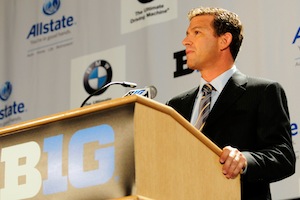 |
| Led by Mark Silverman, the Big Ten Network paved the way for the Pac-12 to follow in their footsteps. (U.S. Presswire) |
The Big Ten Network (BTN) launched on August 30, 2007 and was the first television network dedicated to covering an individual conference. Now considered a true national network with distribution touching on 80 million homes, the successful joint venture with Fox is pumping in millions of dollars to Big Ten schools every year and has quickly turned into the envy of college athletics.
Scott
"This was a lot easier because the Big Ten went first. I give them a lot of credit for being the pioneers back when they did it. The reason they made it easier is that they gave a proof of concept. When you talk to distributors, when you talk to advertisers, they kind of know that there's an analogue out there that exists. I have a great relationship with Jim (Delany) and (BTN President) Mark Silverman who runs the network so I went and visited them in Chicago. They've been very generous about sharing with us the things that worked well and also, in talking about some of their distribution challenges early on, some of the things they could do over again and what they might have done differently. It was hugely beneficial to hear their perspective. To go second was fortunate.
"I think our vision for Pac-12 Enterprises is also pretty novel. First off, the idea of having seven TV networks rather than one. There's never been, forget about college, there's never been a sports network that's launched with seven networks and this regional and national concept. The idea of having a television and a digital network at the same time, that are clearly companions, and a sales group -- when I look at my experience in professional sports and college sports, I think that very much is a cutting edge practice.”
Hal Reynolds, Senior Vice President, Technology
"The Big Ten is the pioneer in this field. I hope we're doing some things a little better than they did, we learned a lot from them and I want to give them all the credit in the world. I think our asset management model is better than what they did and that's a pretty important thing.
“We have a number of ex-Big Ten employees here. We definitely learned from them. I definitely think we learned a lot from Fox as a regional sports network provider also."
Leon Schweir, Senior Vice President, Production and Operations & former BTN employee
"I'm a big proponent of what we did here knowing how difficult it was to do it. This is the modern way to do stuff with the way technology is. We feel it allows us, the network, to have so much more capability six months from now, a year from now. We're celebrating our dot com platform and the seven networks launching now but we really feel there's a whole growth thing that can happen a year from now that's part digital and part linear.
"The Big Ten was just one network with a pretty robust, at the time, digital platform. We're launching with seven. Today it's pretty easy to have the same thing on all seven but by about Friday, that stops being the case. We have a date circled in September where everybody goes, 'Oh my.' That's when we'll see whether we've built to scale."
Murphy-Stephans
"The Big Ten Network, when they launched, they could go to the Fox archives and say we need this, this and this. They had everything in place, they had technical assistance, they had cable men. We had nothing.
"We learned a lot from the Big Ten, they did a lot right. They really did. But it's tough to be the frontrunner, we have the advantage of doing it very differently by going second.
A key component to the Pac-12 Enterprises is the Pac-12 Digital Network. In addition to the launch of a redesigned and optimized Pac-12.com website for the conference, the digital network component will allow fans to watch video and other content from nearly any device, anywhere. An extension of the “TV Everywhere” concept, the league will roll out an iPad app in the coming weeks and eventually have Pac-12 games, features and analysis look transparent no matter what device a person wants to consume it on.
Scott
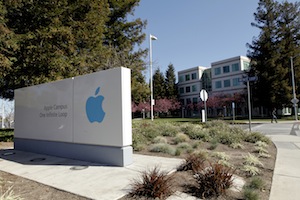 |
| Silicon Valley companies like Apple provided assistance as the Pac-12 made their digital network go hand-in-hand with their traditional linear networks.. (Getty Images) |
"A lot of networks that have launched in the past didn't think about digital because it was something that was evolving. Then you tried to cobble it together afterward. Given where we are in this moment in time, and frankly being out here on the West Coast and having ready access to companies like Apple, Facebook, Google, YouTube and others we talk to all the time, there's a certain DNA in the conference that's instilled here about where the world's going. There's a heavier emphasis on technology and digital than there is at any other sports network out there because of where we're situated and who our alumni are. The reason we're based in San Francisco rather than L.A. is to kind of be closer to the whole technology area. I think we're embracing it in a pretty unique way.
"I recall one great session with three of the very top people at Apple 18 months ago. We kind of laid out our vision and they were frustrated fans and said, 'You're spot on in how you're thinking strategically,' but gave us some ideas about how they see companies and sports companies thinking. They've been very generous. In fact I think the head of software at Apple, Scott Forstall, one of the three in the meeting, is a Stanford alum.”
David Aufhauser, Vice President and General Manager Pac-12 Digital Media
"When I started in January (2012), there was no one doing digital. There was someone from the conference but for the Pac-12 Enterprises standpoint, there was nothing. Just like when Gary [Stevenson] started on September 1, 2011, there was nothing. Since January to today, everything you've seen has been done in that timeframe: the strategy, the plan, the execution, everything, 100 percent. As a startup we're just getting off the ground. There's a lot of things we don't know, there's a lot of things we don't have answers to. Our users are going to tell us what's good and what's bad. If there is a piece of the site that works but our users don't like it, we'll change it. We're not going to be afraid to listen to our users and change. As a startup, we sort of don't know what metrics (to use). We'll learn really fast."
Scott
"I called (Scott Forstall) three weeks ago when David Aufhauser said, 'We're now ready but we need to kind of develop our app and it would be nice if we had somebody at Apple shepherd us through the process and make sure we don't run into a lot of red tape.' Frankly to give us ideas too. It was great to be able to pick up the phone and call Scott, who heads up all of iOS and software development, and have him say, 'Absolutely.' He put one of his crackerjack people on to work with us and David said it's just been amazing to have someone senior at Apple to hold our hand. It's just an example of where it's really paid off for us to have those relationships."
Stevenson
"I think what's happened in the past two years is that the promise of the internet has really delivered as it relates to video. Once video could be transmitted on the internet and it was clear and clean and fast and reliable and HD, that opens up a huge world for people in our business because we have such great premium content. That changes the game.”
Pac-12 Enterprises is based in San Francisco at a former AT&T call switching building built in the 1970's that they share with Comcast SportsNet Bay Area. The enterprise is connected via fiber optics to each of the 12 campuses along with an Internet2 backbone. With the help of Sony, Cisco and others, numerous cutting-edge technologies are present at the main facility and smaller “flypacks” are at every university to film and distribute events that do require a production truck. A state-of-the-art asset management system from Dalet allows for a deeply interconnected production facility. All of it was built and turned on for seven networks and 12 schools in less than five months.
Murphy-Stephans
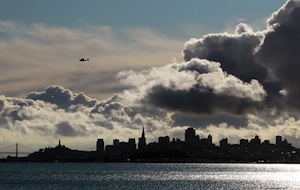 |
| San Francisco was chosen as headquarters for Pac-12 Enterprises due to its proximity to the conference office in Walnut Creek and Silicon Valley. (Getty Images) |
"We were still looking at what property this facility would be in and I'll never forget, I called Gary Stevenson and I said, 'So where is our facility going to be?' It was around Thanksgiving and I hadn't quite come onboard yet but I was already getting pulled into doing things. He said, 'Now Lydia, that's a really good question. We're either going to be in Oakland near the Coliseum or in San Francisco." I asked. 'Do you have an address in San Francisco? Because I'm going to fly out there for four days and need to find a place to live so when I come out in January I can set up.' We hadn't decided yet so I ultimately rented a house that was in Oakland, halfway between here and the Coliseum.
"We were the most popular group at (broadcast trade show) NAB hands down (laughs). We had a lot of fun. We met with so many vendors we had engaged with beforehand and a lot that had wanted to engage with us. It was really inspiring to be there because a lot of the vendors not already engaged with us they were scratching their heads and saying, 'You're never going to make that deadline.' I said, 'I know we will.' They said, 'Well, you'll need us.' I said, 'Nobody that comes with that attitude, is going to be on our team.' This is all about how we're going to get it done. People were jumping at us. We had so much fun at NAB but we went for 14 hour days there meeting with everybody.
"What you see on the screen, to get there, I know at one point, we had 100 different contractors working simultaneously. That was from the construction, to the architects, to the systems integration. At one point we actually had more than 100 vendors working simultaneously to get us to be able to be moved into this facility on July 9th. The week before we moved in, the count was more than 100 vendors.”
Reynolds
“I sat down and counted them the other day, this is my 15th network or TV station that I've turned on. I just stumbled into the business. Absolutely (this was the fastest launch), no question. This was like having the hounds nipping at your heels the whole way. I joined the company in February on the 21st. CNN was really aggressive but it wasn't as big or as complicated as this.
"This all happened in the space of about nine months. Really, the broadcast stuff, happened in about the space of four months. In the case of this building, and it was raw, you can't really put the broadcast equipment in until you've got it cleaned and air conditioned and powered. We didn't have that luxury.
“This is a production facility. We're sort of a distributed model. The master control, where the commercials are at, is in Denver. We have terrestrial fiber to Denver. We can send 10 steams of high definition in real time or shove a gigabyte of files in realtime. The edit systems can interoperate with the systems in Denver so we can cut something here and drop it in a folder and it pops up ready to be aired there. We can actually record it there and edit it here by proxy and have them play it back there.”
Remarkably, the Pac-12 Networks and the entire Pac-12 Enterprise venture has not taken a dime out of the membership's coffers so far. Thanks in large part to the distribution agreements before launch, the conference was able to afford the large startup costs and still be profitable from day one with advertising and subscriber fees.
Bevilacqua
"It is incredibly rare, if not never happened before, where you launch a new network -- of any kind -- and especially unheard of as an independent, and you do a long term affiliation agreement with a cable operator one year prior to launch. And we did four of them. They had never aired an event, which shows you the Pac-12 had incredibly powerful content and the distributors respected that and wanted to have that relationship with the conference. The same thing will happen with DirecTV, Verizon, AT&T, Dish and all the others. They're going through that process now and I'd expect they'll have a favorable outcome because it's a really good product."
Scott
"The architecture, if I can call it that, of our conference matches up perfectly with the architecture of the cable industry. We've got not just two teams but rivals in very distinct media markets. Oregon-Oregon State, Cal-Stanford, USC-UCLA. To have rivals to have to anchor each market where there's a separate cable operator (is big). Arizona-Arizona State has Cox as the major cable provider. USC-UCLA, Time Warner is the major cable operator. With our new members, it was part of the rationale in thinking about Colorado and Utah, the same geographic territory even if they don't have a historical rivalry because they share the Rocky Mountains. I think we're the only ones that can actually do it this way, this idea of regional and national."
Stevenson
"Three of the top five distributors in the country are launching us. Time Warner, Cox, Comcast. That doesn't happen much with cable launches and I've been involved in many cable launches.
"I think we have an opportunity to do something really special here. That's what was attractive to me. I think Larry's vision and strategy was brilliant and I've worked for some brilliant people. I've worked for (NBA Commissioner) David Stern, I've worked for (PGA Commissioner) Tim Finchem, I've been around the sports and television content business for a long time. I can tell you that the collection of rights that were aggregated and, more importantly, how you can build a content company that really connects with fans and allow fans to connect however they want, whenever they want, as deep as they want, on the subject they want -- that is unique.
Aufhauser
“You could be traveling in China as a (U.S.) subscriber and get it, it's not geo-blocked. Really today the way it's built, it's based on the relationship between fans and their cable or satellite provider."
Murphy-Stephans
“I have to say, so far, (ESPN/Fox) have been really supportive. I know they're really curious though, they're competitive also. On one hand they want us to succeed because it elevates their rights but if we succeed too much, then we're chipping into their potential revenue when advertisers start to support the Pac-12 Network at the expense of supporting ESPN and Fox.
"Now it begins. We proved we could launch the network and now we have to show what else we have. We're not going to be judged on our first show, we're going to be judged on our first soccer game, our first soccer game, our first water polo game, our first football game and it will continue as every single show we put on the air will be our report card. We've set it up so we can get immediate feedback and, knowing our fans, we're going to get some feedback."
Scott
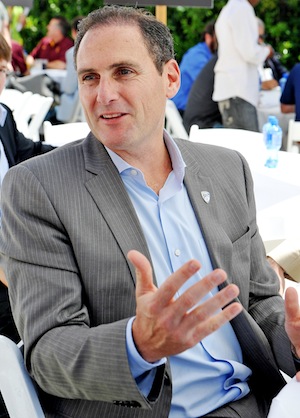 |
| Scott was praised by many for his brilliance and leadership in guiding the Pac-12 through the process of launching multiple networks. (U.S. Presswire) |
"Sitting here today, launching the networks, if you watch the Pac-12 national Network and the Pac-12 Bay Area, you'll see a lot of the same programming. In five years from now, it will look very different. There's a chance to dive really deep into what you might do in terms of local programming, schools, student-athletes and stuff like that. I get very excited about that because the passion around college sports is local. At the end of the day, people cheer for their teams and they don't cheer for the conference."
Stevenson
"We'll feature an unprecedented 850 live events, including 35 football games, over 200 men's and women's basketball games and numerous Olympic sports events that our teams compete for NCAA championships. We'll tell stories about the conference of champions that haven't been told and haven't been seen. We'll also stay true to our conference's mission of being a technology leader as we provide the ability for fans to access their content anywhere, anytime on any device that they want.
"A lot has happened in the 18 months since that first conversation with Larry and we stand on the brink of doing something special. This is a moment we will never forget."
Scott
“I went to our presidents with a business plan. I explained to them that this would be a first of its kind undertaking. No conference has ever taken on something so ambitious or entrepreneurial. Of course there's risk, financial or otherwise -- repetitional and all that. But the way we were able to structure the deal with these cable operators from the get-go, I knew there'd be enough revenue from subscriber fees and projected advertising that I could commit to manage the budget and it wouldn't cost the schools anything. We could work with upfront fees from ESPN and Fox to cover the upfront costs and that operationally it would pay for itself. There's upside potential down the road so that we can reinvest in different ways.
“I often say our schools take a big leap of faith and this is a great example where the presidents and our Board of Directors showed an awful lot of trust to say, 'Go do it.'”






